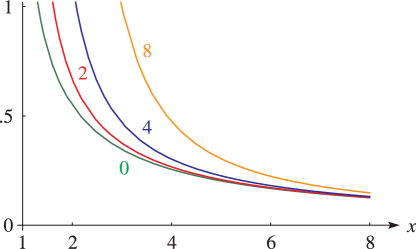金肯职业技术学院毕业证制作【言正 微aptao168】0oB4ifw
(0.005 seconds)
11—20 of 697 matching pages
11: 28.3 Graphics
 ►
►
 ►
►
 ►
►
 ►
►
12: 32.7 Bäcklund Transformations
13: 19.37 Tables
14: 12.19 Tables
Abramowitz and Stegun (1964, Chapter 19) includes and for , , 5S; for , , 4-5D or 4-5S.
Miller (1955) includes , , and reduced derivatives for , , 8D or 8S. Modulus and phase functions, and also other auxiliary functions are tabulated.
Kireyeva and Karpov (1961) includes for , , and , , 7D.
Karpov and Čistova (1964) includes for , ; , , 6D.
Karpov and Čistova (1968) includes and for and = 0(.001 or .0001)5, , 7D or 8S.
15: 3.4 Differentiation
16: 14.4 Graphics
 ►
►
 ►
►
 ►
►
 ►
►
 ►
►
17: 20.15 Tables
18: 10.72 Mathematical Applications
19: 28.21 Graphics
20: 28.35 Tables
Blanch and Clemm (1962) includes values of and for with , . Also and for with , . Precision is generally 7D.
Blanch and Clemm (1965) includes values of , for , ; , . Also , for , ; , . In all cases . Precision is generally 7D. Approximate formulas and graphs are also included.
National Bureau of Standards (1967) includes the eigenvalues , for with , and with ; Fourier coefficients for and for , , respectively, and various values of in the interval ; joining factors , for with (but in a different notation). Also, eigenvalues for large values of . Precision is generally 8D.
Zhang and Jin (1996, pp. 521–532) includes the eigenvalues , for , ; (’s) or 19 (’s), . Fourier coefficients for , , . Mathieu functions , , and their first -derivatives for , . Modified Mathieu functions , , and their first -derivatives for , , . Precision is mostly 9S.
Blanch and Clemm (1969) includes eigenvalues , for , , , ; 4D. Also and for , , and , respectively; 8D. Double points for ; 8D. Graphs are included.






